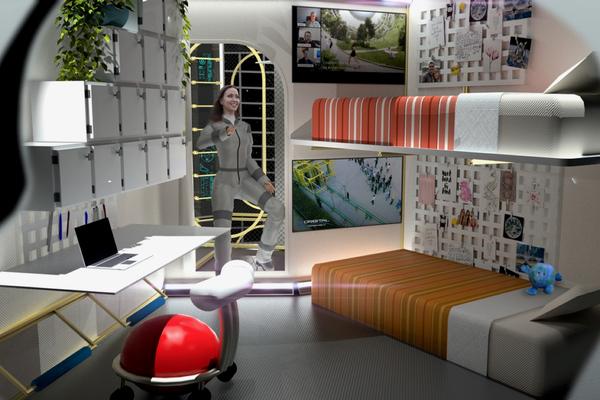The future of space tourism and travel continues to look bright.
Orbital Assembly Corporation (OAC), the only company developing the technology to build the first commercially viable space park, which will one day include opportunities for people to work, live and play in space, has announced that its Pioneer space station, which includes artificial gravity for people to walk and run normally in space, is expected to be operational as early as 2025.
ADVERTISING
The station will have five modules of up to 14,000 cubic feet of space each, built around OAC’s rotating Gravity Ring, which will provide artificial gravity for the people on board. The station will accommodate 28 guests and will have both Zero-G and variable levels of gravity up to .57-G. As a comparison, Earth’s gravity is measured at 1-G.
Trending Now
The gravity level will allow people to sleep in beds without having to be physically attached to one, drink out of a cup, or eat without worrying about food floating into the air. OAC’s goal of creating multi-use space parks includes options for space travelers to come and visit, as well as other applications that include military, communications and more.
OAC has partnered with UC-Irvine and former NASA astronaut Mae Jemison’s organization “100-year Starship” to study artificial gravity as a way to combat the negative health effects associated with long exposure in Zero-G conditions.
The Pioneer station will be launched prior to OAC’s larger project, called The Voyager Station, which will accommodate up to 400 people.

Exterior rendering of the Pioneer station orbiting the Earth. (photo via Orbital Assembly Corporation)
“For the average person, being in space will be a sci-fi dream experience,” says Tim Alatorre, Chief Operating Officer for Orbital Assembly Corp. “Our vision is to make space a destination people will yearn to visit, with familiar elements provided by the presence of gravity.”
“We envision our Pioneer and Voyager space stations as the ultimate ecotourism destinations,” Alatorre says. “Once people get to space, it will change their perspective about Earth. Space travel is still in its infancy, and we’re excited to do our part to push it forward to help improve life on earth.”
For more information, please click here.













